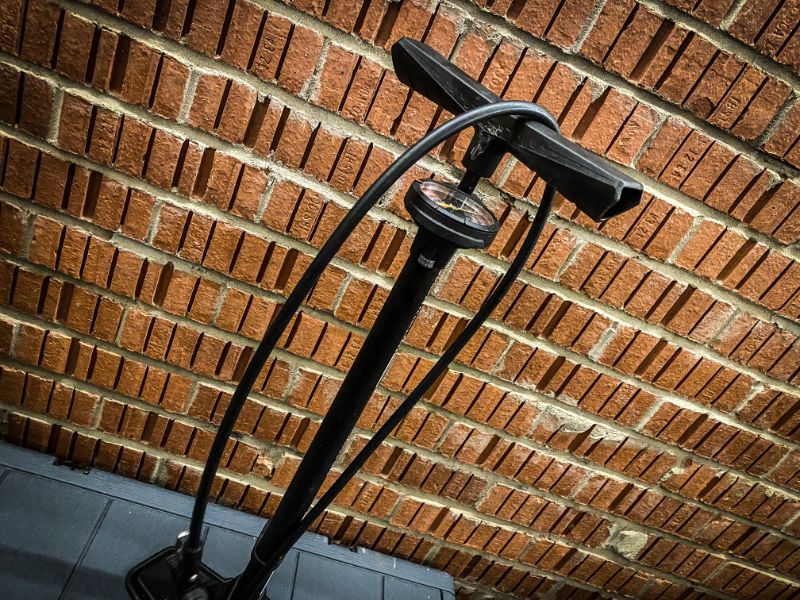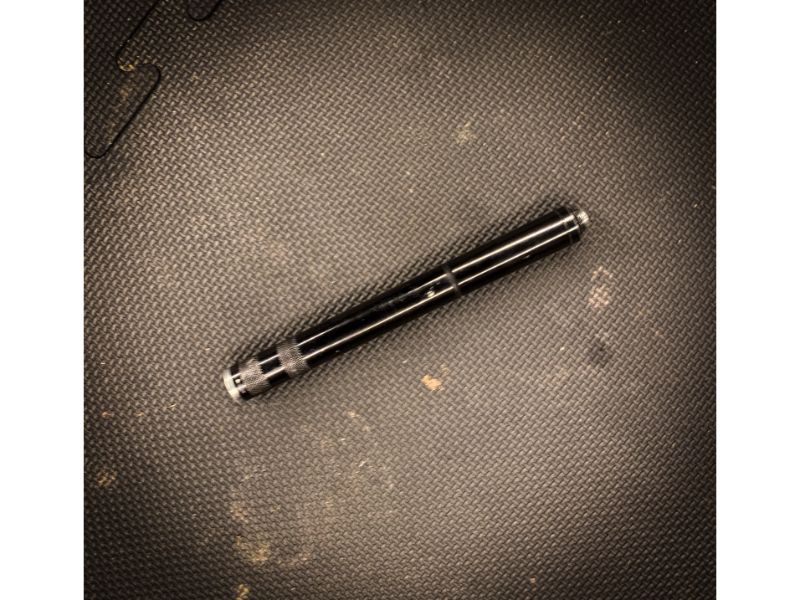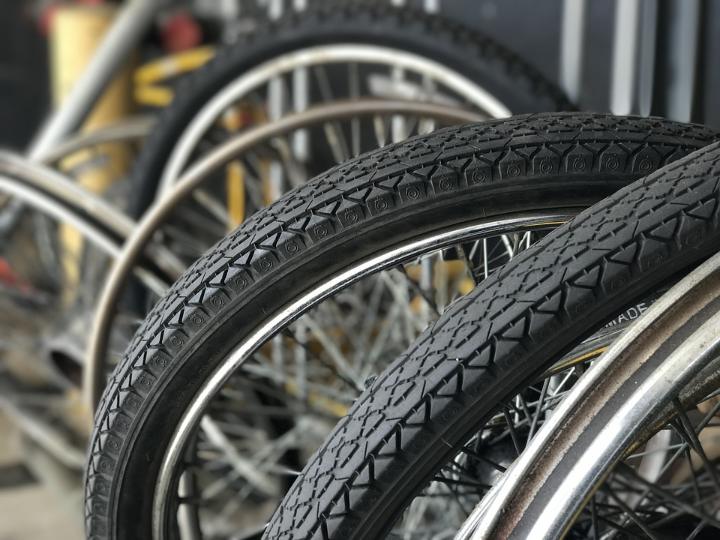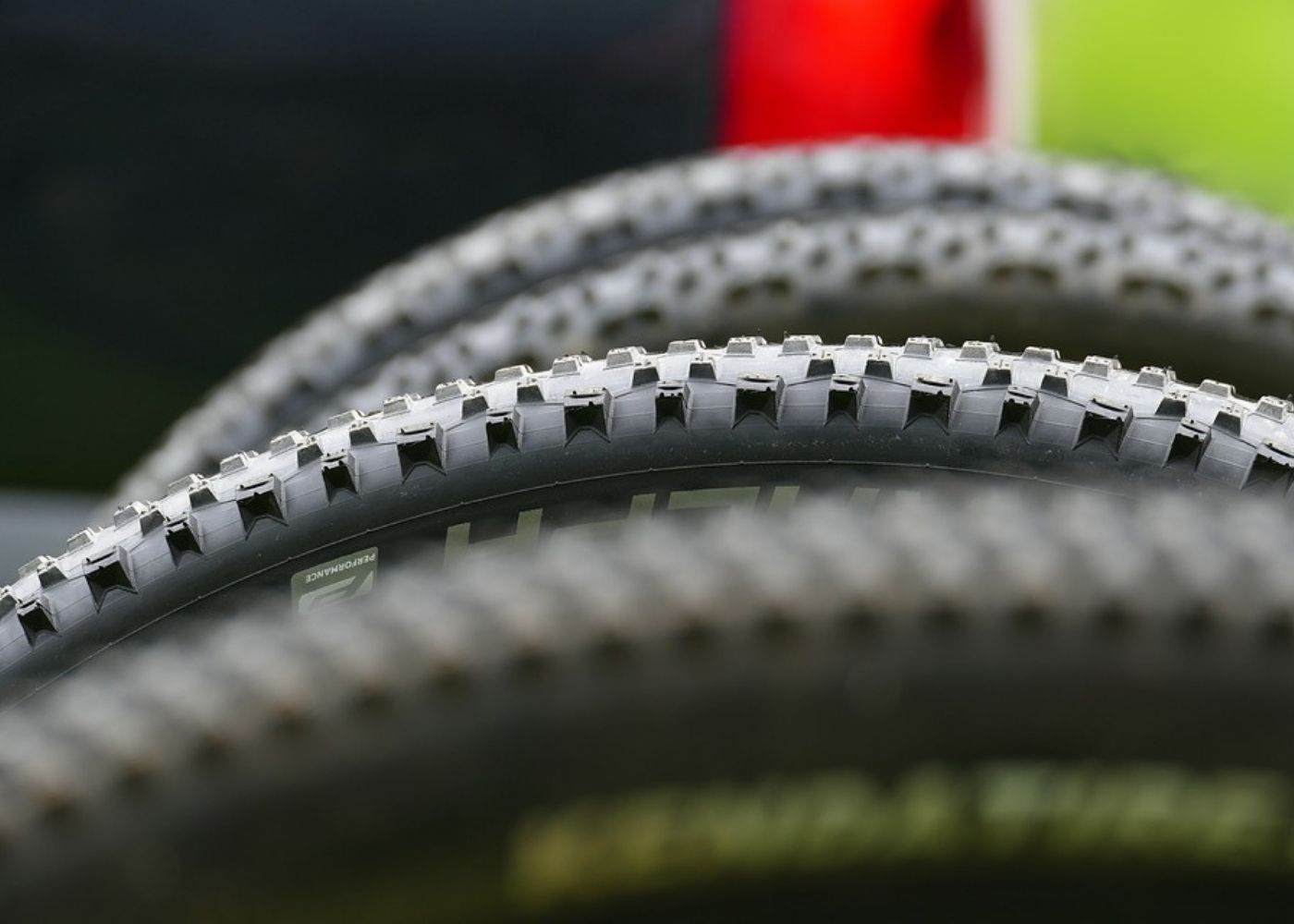When it comes to cycling, it can get complicated, and bikes do require regular maintenance. A common issue all bikes have is that your tire pressure drops over time, and the tire will need inflating back up to its original pressure.
Although this might seem like an easy task, there’s a lot more to inflating a tire than what people think. You have different types of valves, pumps, and pressures, and also you might find the tire to be leaking and need repair. This article will tell you everything you need to know when it comes to pumping up your tires.
Picking the Right Bike Pump
Before we start, the first thing we will need is a bike pump. Bike pumps come in two different types that are commonly used. You don’t need to spend a lot on bike pumps, but the more you spend, the longer it will last and the better the bike pumps will work for you.
Track Pump

- Large in Size
- Pumps tires up very quickly
- Can pump all types of tubes up
- Commonly has a gauge
- Special types for tubeless setup
The track pump is the easiest pump to use and is designed to be at home in your garage or in a workshop. It’s tall in construction and has a large air chamber, handles sticking out the top, and a separate nozzle that attaches to inner tubes. This is the quickest and easiest tool to pump up your tires. They will also be known as a floor pump or an air pump and will tell you exact pressure as they have tire pressure gauges.
Pros
- Very Efficient
- Easy to use
- Some can set up tubeless
- Pressure gauge
Cons
- Very large can’t take on a ride
- More expensive than smaller pumps
Hand Pumps

- Small in Size
- Pumps tires up slowly
- Can pump all types of inner tubes up
- Lightweight
Hand bicycle pumps are what you would commonly take on a ride out. They are very lightweight, and we usually will only use these in an emergency like a puncture. They will take a lot of time to pump up a tire, and you more than likely will have to guess the amount of pressure in the tire. They can pump all types of tubes up and are very cheap to buy.
Pros
- Lightweight and small
- Easy to use
- Cheap
- Can pump all types of inner tube
Cons
- It takes ages to pump
- Much harder work
When it comes to getting a pump, your best bet is to get a small hand pump to start with, so you’re able to not only just use it at home but also use it out on rides. Then later upgrade to a track pump as you further invest into your cycling.
We Think You’ll Like It: How to Tighten Mountain Bike Chain
Different Types of Valves
Bike tires typically have two different types of valves, they both have advantages and disadvantages, and depending on what kinds of bikes you have, you will probably have come across both. Generally, all pumps can do both, but it’s essential to understand what you have when it comes to replacing a tube or inflating a tire. The two types are called Schrader valve and Preata valve.
Schrader valve

Schrader valves are commonly what you will see on mountain bikes. This Schrader valve, not only will you see on bikes, but you will also see on car tires. It’s a small circle with a button inside. This valve works when the button is pushed, it opens, and if you have a pump on, you can increase the pressure, or if you were just to press it with air would leak out, and you can decrease the pressure. The inner core on a Schrader valve is not replaceable, and when these go wrong on an inner tube, the whole tube will need changing.
Benefits of Schrader valve
- Very Durable
- Only on single height
Presta valve

A Presta valve is something you will commonly see on road bikes but can be seen on mountain bikes. They are much smaller than the Schrader valves and work entirely differently. They are a small tube cylinder with a screw top. To add pressure, we unscrew the top and push the pump onwards and then pump increase the pressure. To remove the pressure, we unscrew the top and then simply just push it down, and the pressure will release. The valves on Presta are removable, and you can swap these out, but they are more fragile. Presta valves also come in different heights. Some are 42mm, 60mm, and 80mm. This is because, on specific bikes, the rims are much deeper.
Benefits of the Presta valve
- Many different sizes
- Can replace the valves alone
We Think You’ll Like It:
How Should a Mountain Bike Fit
How to Build a Mountain Bike From Scratch
How Much Tire Pressure Do You Need to Put in a Bike Tire?
All tires are designed to work differently. Some are made for grip and keep you on a trail. Some are made for the least rolling resistance possible. This is why we have a market with so many different options. They will all require different tire pressures, and they are not just unique to the tire but also to the user. This is why you will commonly have a tire pressure gauge on a track pump. A common term for air pressure is PSI which is pounds per square inch, and you also have BAR, which is a measure of pressure, and one BAR is equal to 14.5 PSI.
How to get the correct tire pressure with a tire pressure gauge?

Firstly you need to check the side of the tire you’re using. It is a law that a tire company must state maximum pressure, and it will typically be written like this, 50 PSI Max. With that figure, you now know what not to go above. If you’re unsure, I recommend going to about 70% of the maximum bike tire pressure. After this, if you feel it is too spongy, put more air in. If it’s too hard, take some out. Just make sure on bumps your not banging on the rim of the wheels.
How to get the correct tire pressure without a gauge?
I firstly would advise you to go to a local bike shop and get them to pump it up with a pump with a gauge. Then get a feel for that bike tire pressure and replicate it yourself with your pump without a gauge. What you’re looking for is enough pressure that the rim is protected but not too much that the ride becomes uncomfortable. On a mountain bike, the more pressure you have, the harder the ride will be and less grip the tire offers. The less pressure, the more grip, but the tires will get more lag.
How to Pump Up a Tire

So now you have your pump, and you know what valve you need to be putting the air into, let’s talk about the process of how we do the job of inflating the mountain bike tires. This is the process I follow to keep it nice and straightforward.
Step one: Determine the valve type
The first thing you need to do is determine the valve type. You will have either a Presta valve or a Schrader valve. Once you have done this, you will need to ensure your pump is on that setting. Once you know remove the valve cap.
Step two: Attach the pump
Pumps attach in two different ways. You have a push on and screw on. A push on you will take the nozzle and literally push it on. On Schrader valves, you will be able to straight away, but on a Presta, you must unscrew the valve first. A screw on pump, you will screw an adapter onto the valve. Once this is secure, pump the lever a few times to ensure it is working.
Step Three: Apply the correct PSI
Now we need to apply the correct PSI as discussed above the is the amount of air pressure you need to add. If you are unsure, you want the tire to have enough pressure in so it doesn’t bounce down to the rim and isn’t rock-solid ready to burst.
Step Four: Remove the pump
You now need to remove the pump by either unscrewing or nozzle or just pulling it off. Not forgetting that if you are using Presta valves, you will need to screw the valve back up again.
Step Five: Ride your Bike
Now it’s time to go for a bike ride.
What to Do if Your Tire Isn’t Holding Air?

Tires will naturally lose air over time, and this is completely normal. It might be over a month or over a year, but they will lose pressure over time. Sometimes though, you might find it losing pressure a little bit too quickly. If they are going flat over a week or maybe a couple of days, perhaps even an hour, this is a problem.
This is what we call a slow puncture and is very common. It’s where something has punctured the tire, and unlike a standard slit in your inner tube, it is much smaller and is only slowly losing the air. To fix this, you will need to either take the tube out and patch it or replace the tube. When doing this, it is also essential to check the tire to make sure what punctured it in the first place is gone.
We Think You’ll Like It:
How to Make a Mountain Bike Faster
How to Clean Mountain Bike Disc Brakes
Conclusion
As you can see, there’s a lot to take into account when pumping up your tires, is it a Schrader or Presta valve, what tire pressure do you need, and the different types of bicycle pump. Having your tires pumped up correctly can make or break a ride. The most important thing is to be safe when doing it, get the correct pressure, and if it’s going down, quickly find out why.
